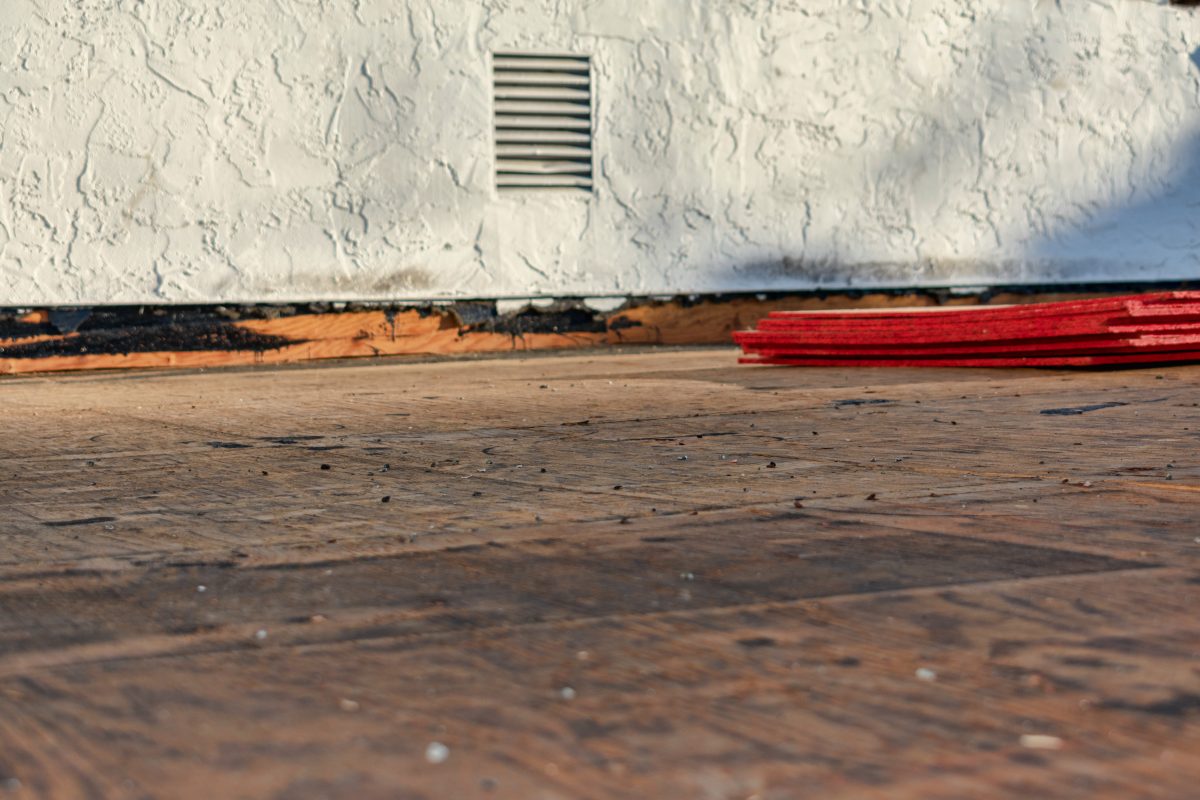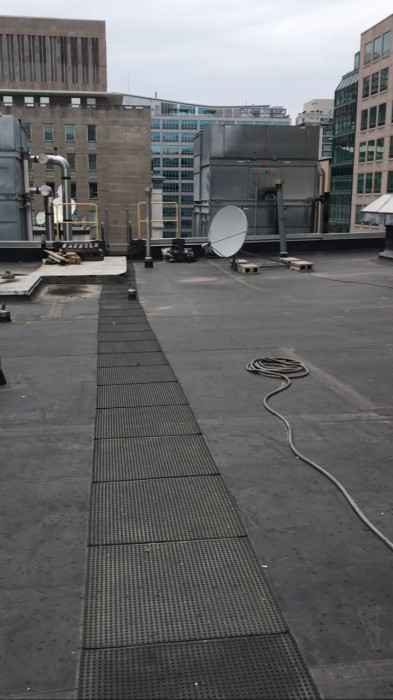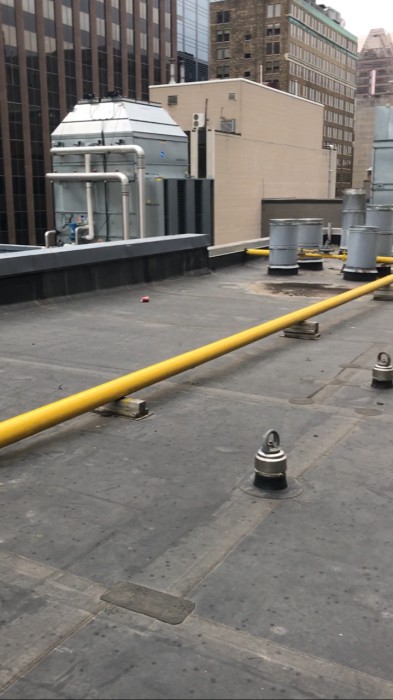
25 Oct Flat Roof Replacement Cost: All You Need To Know
Flat roofs are getting more popular than they used to be some years ago, and flat roof replacement cost is dropping. The usage of flat roofs in homes has become a trend over the past years, just as it has been in some industrial and commercial structures.
There are so many factors to consider before you get a flat roof installed in your home. However, some main factors influence the flat roof replacement cost you will incur. There are several materials used for flat roofs, just as there are different manufacturers. This will be discussed further as we move on.
One thing to note, though, you shouldn’t consider installing flat roofs in your home just because some did it. You need to consider several factors, which range from how your house is structured to how big the home is. There are areas where having a flat roof will not work. And even in cases where it will work, there are several special needs and challenges it may pose.
One quick fact, if after reading this, you still can’t decide on whether to incur flat roof replacement cost now, it’s best to reach out to a professional. We are always ready to answer any questions you may have about a flat roof replacement.
In this article, we will discuss the nuances of flat roof replacement in full detail. We will especially take a look at the cost of flat roof replacement and the factors that affect this price.
Related article: How to Make Sure Your Flat Roofing Lasts Long

Flat Roofs and What Makes them Special
There is no big deal to defining what a flat roof is. It is just as named, the roof is flat, unlike the conventional corrugated iron sheets, and layered tiles. When you think of flat, horizontal is what comes to mind first. However, rather than being perfectly flat, in most cases, a level of inclination is given to the roof, which is a crucial step, especially towards proper drainage of the roof.
In many regions of the world, flat roofs are used primarily thanks to their ability to maintain the home at a stable and optimal temperature. This is why flat roofing is predominantly used outdoors, especially with storage areas, extension, and some other industrial buildings. Also, they are adapted for use in houses that want to look more modern, compact, and classic.
When it comes to aesthetics and functionality, incurring flat roof replacement cost is worth it. But, as said earlier, there is a lot of responsibility that comes with that. There is a need for regular maintenance, which you may not face when using the traditional roof forms. This is a slight indication that the roof is more adapted towards luxury than it is for everyday use.
What makes the stress of maintenance worth it are the aesthetics and convenience. By having a flat roof in a part of your home, you can turn that part to somewhat of a relaxation center. In this case, it serves just like a balcony, and it certainly feels like one. You can use the space offered by a flat roof for many purposes. You can enjoy this versatility for about 30 years when the roof is maintained correctly. However, without proper maintenance, flat roofs get damaged easily.
It is easy to pass on getting a flat roof to replace your current old or worn-out roof, but there are more than enough reasons why your next roof replacement should be a flat roof.
Why do you need to change your old roof to a flat roof?
Prior to the wide adoption of flat roofs, there have been several misconceptions, which made people think that the roof is only best adapted to commercial and industrial uses. Also, most people easily get carried away by the various disadvantages that come with the use of the flat roof. Every roof type comes with its pros and cons, and flat roofs are just one of those. However, what you stand to benefit from the use of flat roofs outweigh the drawbacks that come with it.
One such reason why people think the flat roof is not good enough for home use is that they are not built to support ice and snow for a long time. But this is not true. Just like any other type of roof used in Toronto, there are codes to be followed. Since flat roofs are endorsed to have passed met those codes, they are surely good enough to be used for homes, even during winter.
Flat roofs are not just faster to install and need lesser materials, they can also save you costs in the roofing of your home. Here are some other reasons why you need to change your old roof, in spite of the flat roof replacement cost.
It is a better structure support roof
There are regions with restrictions to the height of roofs, flat roofs beat that. A flat roof can also support more structures than the conventional roofing system. The flatness of the roof is one reason why it has been adopted for extensive use in industries and many homes. With industries, the building structures are extensive and vast, and it is impractical to make use of steep roof systems. They are just so big that it makes it nearly impossible to maintain and design roofs that end up steeper. Flat roofs save the day in this aspect.
This also applies to residential homes.
It adds more space for use
There are times where you wish your house had more space. You probably want to have an umbrella outside, where you can sit with your partner to enjoy the evening breeze while sipping some soda. Or you need to have a barbeque party with your little circle of friends, and there is just no space in the house.
If you have a roof over your home, it becomes easier to make your wish come through. Change your roofing system to a flat roof, and you have enough space to have these structures and utility set up.
If you live in the city, where there seems to be no fresh air in circulation, you can go up higher to the roof, the atmosphere there surely feels better. In the dense urban centers, many commercial and residential buildings have HVAC systems installed on a flat roof. You can also follow this trend.
You can easily maintain it and monitor it
Though maintaining a flat roof comes with a conscious need to inspect the roof, and perform the necessary actions when things go wrong. Maintenance is more accessible than it is on other roofing systems. Since the roof is flat and walkable, you can easily walk on it, to carefully find out damaged areas. Unlike steeper layered roofs, where falling is easier. Every roof needs maintenance, but on flat roofs, maintenance can be carried out easily.
It is energy optimized
Flat roofs have proven to be efficient in saving energy. This is mainly thanks to the materials used in making the roof. In most cases, flat roofs are made with atactic polypropylene. This is a recycled by-product. If you are trying to go green, there are flat roofing systems that can further enhance your passion.
According to reports from house owners that have adopted the use of flat roofs, they have experienced about 30 to 40 percent savings on energy. This is because flat roofs help with temperature regulation. While other roofs do so little in dispelling most of the heat coming from the sun, flat roofs help keep the home cooler.
It has a functional design
Design is another factor of the flat roof you need to consider. The design adds aesthetics to your home. In addition to this, the structure is designed to be waterproof, hence offering more protection than other roofs get. When there is rainwater hanging on the roof, there are hoppers in the roof which drains the water.
With this functional design, flat roofs are dubbed to be durable. They can stand the test of time. While lasting long on your home, flat roofs have high wind resistance abilities. In the case where you use steeper roofs, shingles can be easily tipped off during high wind. This cannot occur with flat roofs.

Flat Roof Replacement Cost: Choice of Material
Flexibility is an astounding characteristic of the flat roof, and this is due to the various materials that can be used in its production. The type of material used influences the flat roof replacement cost you eventually incur. There are three main categories of materials used in the creation of flat roofs.
- Single-layer membrane roof
- Modified bitumen roof and
- Built-up roof
These various categories consist of different materials, which offer multiple makes of flat roofs their uniqueness.
Single Layer Membrane Roof
In roofing, the use of membrane has become popular. Also, for commercial purposes, membrane roofs are a top choice. Technically, membrane roofs are referred to as elastomeric or plastomeric roof membranes. In this category of flat roof materials, there are several categories.
- Neoprene
- EPDM
- PVC
- Chlorinated polyethylene and chlorosulfonated polyethylene sheets
- Polymer-modified bitumens
Of the various materials specified in this category, EPDM is the most used. It is known to be widely adopted for both residential and commercial use. If your home is just like that of other people, you can ask your roof installer to use an EPDM rubber roof.
EPDM is applied as a single layer, having a thickness of about 0.030 to 0.060 inches. This roof type is made of synthetic rubber, and it has been designed to be flexible and elastic. This helps it in adapting to changes in temperature, as well as some other hard impacts.
There are different ways through which you can attach membrane roofs. They can be partially laid, to be held in position by river rock ballast. And in other cases, they can be firmly attached to the deck of the roof.
There is a significant difference between EPDM membranes and the PVC membrane. The EPDM is fastened to place by adhesive, while installers heat and weld the PVC to place.
Modified Bitumen Roofing
This material was first used in making flat roofs in the 1960s. The design and material were innovated for use, to replace the Built-up roofing. It is called modified because it was meant to be a hybrid of BUR and polymers. The polymer serves as a reinforcement of the BUR material.
Upon production, various installation techniques were developed, in a bid to achieve the modern look flat roofs are all about.
The installation methods are
- Hot applied
- Torch applied
- Cold applied
As mentioned earlier, polymerization is employed while making this roof type. Thanks to this, elasticity and flexibility are achieved.
Built-up roofing
For ages, one problem experienced by most roofing systems was that of a ‘low pitch.’ The built-up roofs solve this problem. Built-up roofs are always made of several layers, and on these layers, asphalt is impregnated. Each of these layers is then embellished in bitumen with a hot mop.
The monolith roof membrane is formed from the fusion of the hot asphalt and bitumen. Unlike the membrane flat roof that is sufficient as a single layer, the built-up roofs are assembled in threes or fours. The topmost layer of the assemblage is smeared in tar, to which finely crushed granules are added. When correctly done this way, the built-up roof can withstand UV light and the weather.
Related article: Pros and Cons of Flat Roofing
Flat Roof Replacement Costs: Factors to Consider
When you finally decide to swap your old for the modern flat roofs, there are some factors that you need to note. These factors, when not adequately considered, can lead to the failure of the flat roof. Before you go even to find out the flat roof replacement cost, you need to understand these;
Slope
For a roof to shed water, there needs to be an inclination. When the roof is accurately inclined, water ends up being stagnant, which can lead to damage to the roof. One of the main problems faced by flat roofs is ponding water. If this is not monitored astutely, flat roof replacement cost becomes a recurring expense.
This leads to leaks, and as the water retention continues, the leakage becomes more profound. You need to have a professional check the slope of your home. This will determine if your house can support the use of flat roofs.
Drainage
This is just as important as the slope of the roof. If the drainage is wrong, the whole point of the slope is defeated. The drainage system of the roof is the only way water can exit the roof. If your roof does not have one adequate to support the replacement, you need to add its construction to the flat roof replacement cost. The drainage system has to be the one sufficient for the roof type you intend to construct. You need to check if the scupper openings are large enough, just as you consider the gutters too.
R-value
The R-value is the factor that depicts how well the insulation on the roof can resist heat. When the R-value is higher, it means it has more excellent resistance to heat. Every roof has an R-value, even the one you are using now. Consider what it is and how it has affected the cooling of your home. There are two ways to improve the R-value of a roof. The first is to add insulation to the roof. The other is add thickness to the taper of the roof.
Structural loads
This is another essential factor to consider before you dive into footing the flat roof replacement cost your experts place before you. You need to know the load your roof will be supporting. Discussing this with the installation engineer is best, as they will be able to provide insight into the material that will most suit your specific needs.
Deficiencies in the roof deck
You need to consider if there is any problem with the deck. When there are issues like joists with the deck, it will be tough for water to flow down the roof. This results in ponding, which ultimately will lead to a leakage in the roof.
This is one reason why you should have an engineer come around. They will be able to figure out the problems and how to go about it. All the issues should be factored into the flat roof replacement cost.
If this is not done and you go ahead to perform the replacement, the roof will get damaged, and there will be a repetition of the old problems on the new roof.
Wind
Whether or not you like it, this is an essential factor to consider. When there is the passage of wind across the roof, it experiences positive air pressure. When this occurs, it pulls the roof away from the adjacent structure beneath. If there is no proper fastening of the roof to the structure, the roof could fail during windy seasons. There is no telling how detrimental this may be to your house and whatever is contained inside.
If the decking underneath the roof is not strong enough, there is the possibility of further structural damage. There are, however, two main ways with which adhesion to the underlying structure occurs for the flat roof. It can be held down mechanically, or it has a direct attachment to the insulation.
For a flat roof to resist the wind, the material being used is of paramount consideration — the type of fastener to be used and the spacing that will be given.

Factors that Influence the Material Type You Choose
There are different types of flat roofing materials you can always choose from, and they come at different costs. The material you, however, choose is affected by a couple of factors, which are; your budget and durability of the material. While these may not be complementary factors, they go a long way in deciding which material you opt for.
If your budget is low, you may be forced to go for a material with lower durability. Also, if you are after a flat roofing material with high strength, it comes at a price – which is always high.
While the two factors, as mentioned above, are all dependent on you, there are two other factors that you don’t have control over. These are; location and complexity of installation. The different materials come with varying techniques of having them installed and certified against the wind. This varies, and it affects the flat roof replacement cost.
How much will flat roof replacement cost you?
Having a flat roof will cost you between $1.5 and $10 per square foot. Now, you need to multiply this by how big the area to be covered is. If you are looking at an area of around 1500 square feet, this will amount to between $2250 and $15000.
This pricing can further be broken down to reflect the type of material you are dealing with.
- For asphalt roll roofing, it could cost between $1.50 and $2.50. This will amount to $2250 and $3750 per 1500 square foot.
- For built-up roofing, at a price between $2.5 and $5.0, the total cost per 1500 square foot is between $3750 and $7500.
- Single-ply rubber/plastic roofing costs between $3 and $4. This totals between $4500 and $6000 for 1500 square feet of roofing.
- Spray-on roofing goes for about $1.5 and $6, which is about $2250 and $9000 for 1500 square feet.
- Standing seam roofing has a cost of between $5 and $10. This results in a total value of $7500 and $10000 for every 1500 square feet of roofing.
Since the procedure discussed is a replacement process, you need to consider how much it will cost to remove the old existing roof. If the same installation engineer handles the project, removal may cost between $1500 and $6000.
Frequently Asked Questions About Flat Roofs
If you are new to the concept of flat roofs, there are probably still a lot of problems lurking in your mind. There is so much to know about the flat roofs, which the scope of this article may not have covered in depth.
If there is any area where you are still not well-informed (which is not pricing related, it is best to read the other articles on this website). Meanwhile, here are some questions that people ask from time to time.
How do I know the best company to handle my flat roofing?
Having your flat roof done is just like any other utility in the home. You need to consider your options in hiring experts to handle them carefully. Before you hire a person or company to entrust your flat roof replacement cost, you need to ask around. Ask from friends and family who have flat roofs in their homes. Get your facts from them, how much it costs, and how the company handled the whole process.
If what you learned from your research is suitable for you, you can go ahead to hire the company. Other than this, you can also search through the internet and read reviews. When you have a shortlist of companies you think you may love to work with, you can invite them separately to take a look at the house. By interacting with them, you get to know who is right for the job.
 Can I walk on the roof?
Can I walk on the roof?
Even if you are looking to have a mini roof, once it’s an adequately constructed flat roof, you are good to go. The roofs are very sturdy and can withstand a great deal of walking pressure. If the roof is made of the membrane, you get to enjoy the anti-slip characteristic that comes with it. Irrespective of the number of years in which the roof has been exposed to constant foot traffic, the anti-slip nature will undoubtedly persist.
I heard flat roofs can be recovered, with what types is this possible?
Various kinds of flat roofs can be improved. Especially flat roof materials made of gravel, tar, rubber, asphalt, and the ballasted rubber roofing. It is safe to say that all the flat roofing types can be effectively recovered.
Even if the roof is suffering from extensive damage due to water, or the decking has experienced a huge dent, it can still be recovered. Hence, if you are currently using a flat roof, you may not need to replace it. The flat roof replacement cost can be halved to cater for repair.
Related article: Flat Roof Repair – How to Repair a Leaky Flat Roof
Conclusion
Flat roof replacement costs vary from place to place, but the difference is very minute. Several factors influence flat roof replacement cost including the choice of material, building height and labour costs. We advise that you get a detailed estimate of flat roof replacement costs before going ahead with replacing your flat roof.
Our flat roof repair and replacement experts can help you with any questions you may have about flat roof replacement costs. Contact us today!

No Comments